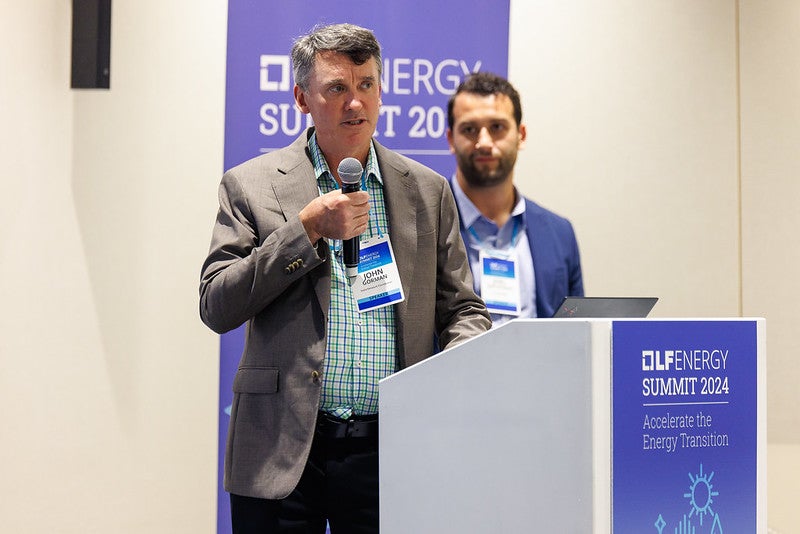LF Energy Summit Recap and Video: Leveraging Underutilized DER Edge Compute to Improve Market Efficiencies
At LF Energy Summit 2024 in Brussels, John Gorman, co-founder of the SolarNetwork Foundation, and Joel Santisteban, CEO of Ecosuite, delivered a presentation titled “Leveraging Underutilized DER Edge Compute to Improve Market Efficiencies.” Their talk focused on how distributed energy resources (DERs), coupled with edge computing, can drive market efficiencies by optimizing grid services, improving forecasting, and enabling better resource management (full video follows at the end).
Here are the key takeaways from their session:
1. The Underutilization of DER Edge Compute
John and Joel introduced the concept of DERs – such as solar, wind, and battery storage systems – and how they are underutilized in terms of their computing power. These systems, often equipped with advanced hardware, are used mainly for data collection and control, but their computational capabilities remain largely untapped. By leveraging edge compute resources at these sites, they propose that market efficiencies can be significantly improved.
2. The Role of SolarNetwork in DER Infrastructure
The SolarNetwork Foundation provides a software framework that allows energy application developers to build on top of DER infrastructure. SolarNetwork offers a plug-and-play solution for managing diverse hardware assets without the need for new investments. Through a modular setup, the SolarNetwork’s SolarNode connects to various devices like inverters, meters, and sensors, facilitating two-way communication between the grid and edge devices. This framework not only streamlines the deployment of DER systems but also allows real-time data collection and secure cloud integration.
3. Ecosuite’s Approach to Market Efficiencies
Ecosuite leverages the SolarNetwork platform to provide digital tools and applications that help businesses manage distributed assets more effectively. Joel discussed how their platform aids in optimizing DERs for both economic and operational efficiencies. Their focus is on forecasting and delivering better grid services through real-time data insights and integration with existing grid systems. The use of open source technologies ensures that these solutions are scalable, cost-effective, and accessible to a broad range of users, from large corporations to small non-profits.
4. Driving Market Efficiencies Through Better Forecasting
One of the central themes of the presentation was the importance of better forecasting for DERs. Accurate, real-time forecasts allow operators to make more informed decisions regarding grid management, asset deployment, and energy production. By utilizing edge computing, the forecasting process can be localized, reducing latency and improving precision. This approach helps reduce grid instability and ensures better resource allocation, which ultimately drives market efficiencies.
5. SolarQuant: A Framework for Edge Computing
A significant portion of the session focused on SolarQuant, a new framework built within SolarNetwork that allows machine learning models to be deployed directly at the edge. This means that instead of sending data back and forth between cloud servers and edge devices, predictive models can run locally on devices like inverters and meters. This setup is especially useful for failure detection and performance forecasting, enabling real-time insights into system performance and minimizing downtime. The framework’s open source nature, combined with its adaptability, positions it as a promising tool for future grid optimization.
